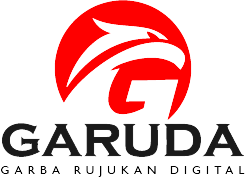EFEKTIFITAS PEMBERKASAN DOKUMEN DIGITAL MELALUI METODE TEMPLATE MATCHING CORRELATION
Abstract
Scanning printed documents in the form of digital documents has become a necessity for many institutions and companies, as well as in LP3I Polytechnic Jakarta. One document that is often on
over the media, i.e. diplomas and transcripts. With an average number of graduates reaching 1,900 per year, certainly many documents must be transferred to provide and be filed well, but there is no application that can manage documents over media that have already been given file names and unstructured filing, so the files are it will be difficult to search again. Generally, official documents include a unique number as an identity with a certain code structure, such as NIM, diploma number and transcript number. The purpose of this research is to determine the effectiveness of document scanning results by utilizing optical character recognition techniques known as OCR (Optical Character Recognition) on the unique number. The method used in this optical character recognition process is to use template matching correlation, which is a technique to get the highest value in the comparison of characters in input images, which have been segmented into letters and processed in binary image formats, and characters in template images. The results of this study are in the form of a prototype application using Matlab that can detect unique numbers in documents as a reference in filing files in the form of naming new files and placing them in the desired folder.
Key words: documents, digital, template matching correlation
References
Adhvaryu, Rachit Virendra. “Optical Character Recognition Using Template Matching (Alphabet & Numbers).” International Journal of Computer Science Engineering and Information Technology Research (IJCSEITR) 3, no. 4 (2013): 227-232.
Bahri, Raden Sofian, dan Irfan Maliki. “Perbandingan Algoritma Template Matching dan Feature Extraction pada Optical Character Recognition.” Jurnal Komputer dan Informatika (KOMPUTA), 2012: 29-35.
Chandarana, Jagruti, dan Mayank Kapadia. “Optical Character Recognition.” International Journal of Emerging Technology and Advanced Engineering (UKA TARSADIA University) 4, no. 5 (May 2014): 219-223.
Cheriet, Mohamed, Nawwaf Kharma, Cheng-Lin Liu, dan Ching Y. Suen. Character Recognition Systems: a guide for students and practitioner. Montreal: Wiley Interscience, 2007.
Hartanto, Suryo, Aris Sugiharto, dan Sukmawati Nur Endah. “Optical Character Recognition Menggunakan Algoritma Template Matching Correlation.” Journal of Informatics and Technology 1, no. 1 (2012): 11-20.
Mohammad, Faisal, Jyoti Anarase, Milan Shingote, dan Pratik Ghanwat. “Optical Character Recognition Implementation Using Pattern Matching.” International Journal of Computer Science and Information Technologies 5, no. 2 (2014): 2088-2090.
Nataliana, Decy, Sabat Anwari, dan Arief Hermawan. “Pengenalan Plat Nomor Kendaraan Dalam Sebuah Citra Menggunakan Saraf Tiruan.” Jurnal Informatika 2, no. 3 (September - Oktober 2011): 48.
Patil, Jatin M, dan Ashok P Mane. “Multi Font And Size Optical Character Recognition Using Template Matching.” International Journal of Emerging Technology and Advanced Engineering 3, no. 1 (2013): 504-506.
Rathore, Manisha, dan Saroj Kumari. “Tracking Number Plate From Vechicle Using Matlab.” International Journal in Foundation of Computer Science & Technology (IJFCST) 4, no. 3 (May 2014): 43-53.
Rustanto, Agung Edi, Iis Kartini, Featy Octaviany. (Volume. 4 Issue. 9, September - 2019), “Analysis of Perceived Benefits, Convenience, and Risk to the Effectiveness of Non-Cash Payments", International Journal of Innovative Science and Research Technology (IJISRT), www.ijisrt.com. ISSN - 2456-2165 , PP :- 682-686.
Setiady, Teddy. “Analisa Batas Sudut Kemiringan Hasil Pemindaian Dokumen Menggunakan Template Matching Correlation.” Jurnal Lentera ICT Vol 3 No.1 (Mei 2016): 112-130





